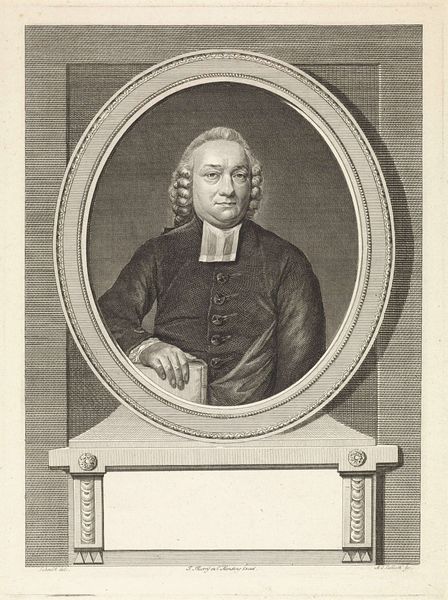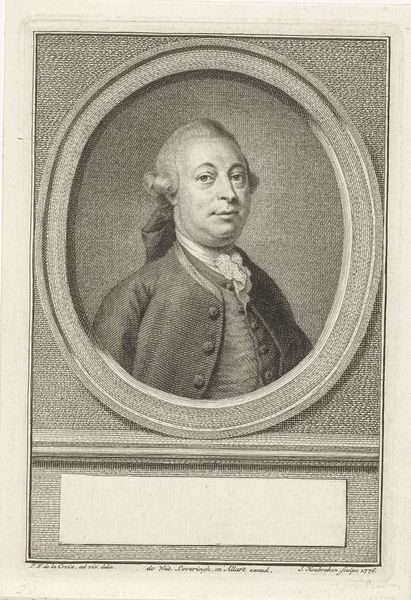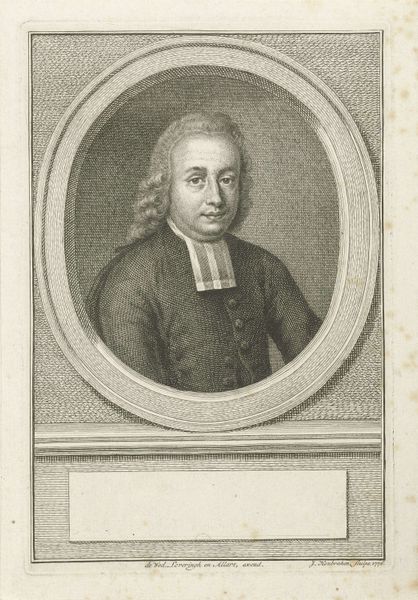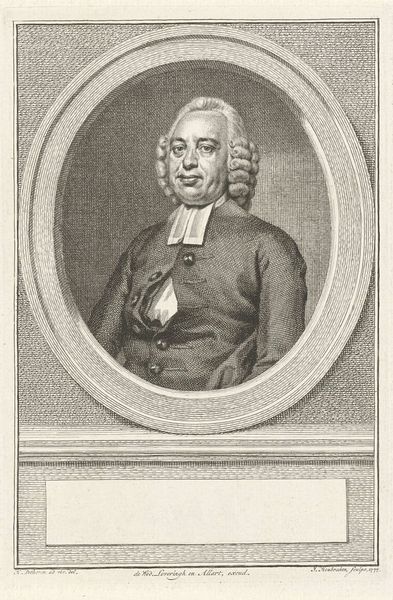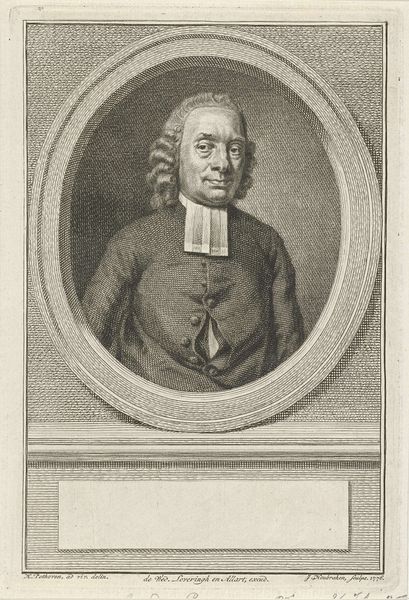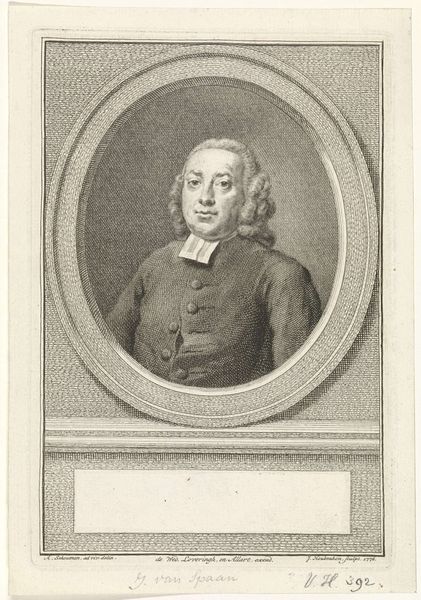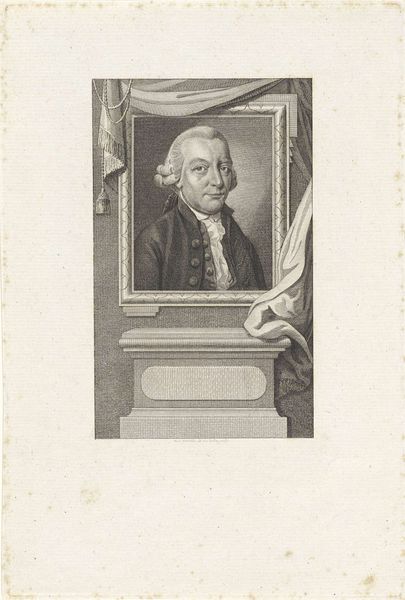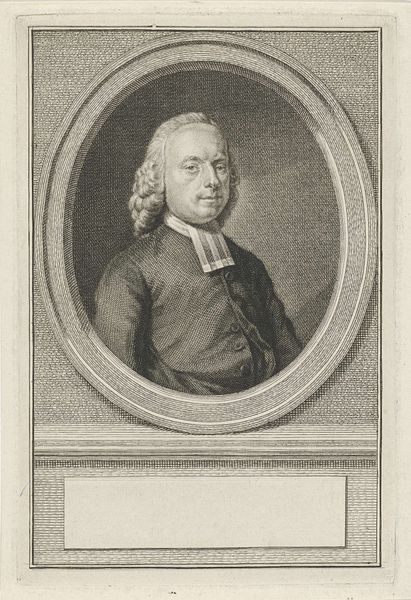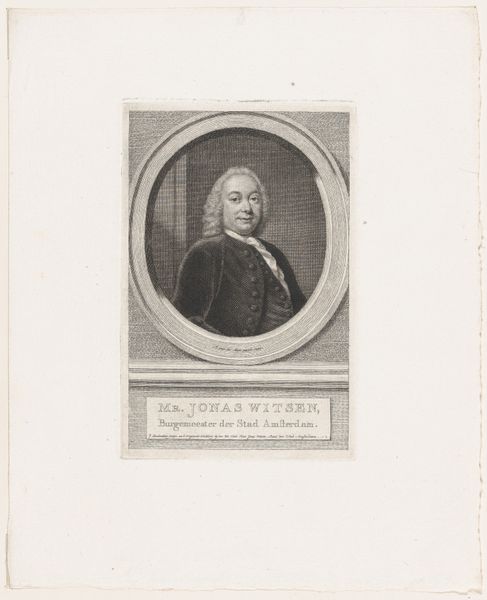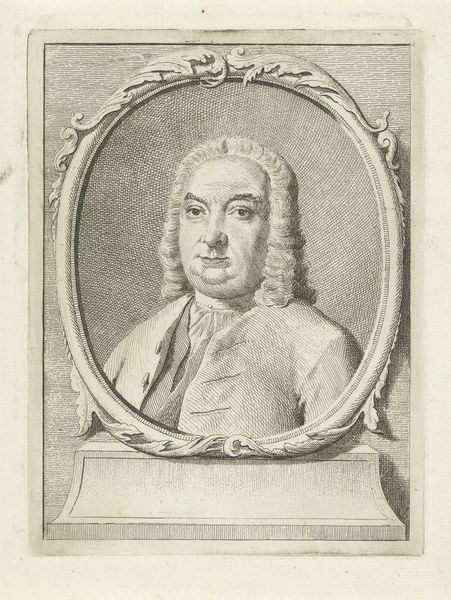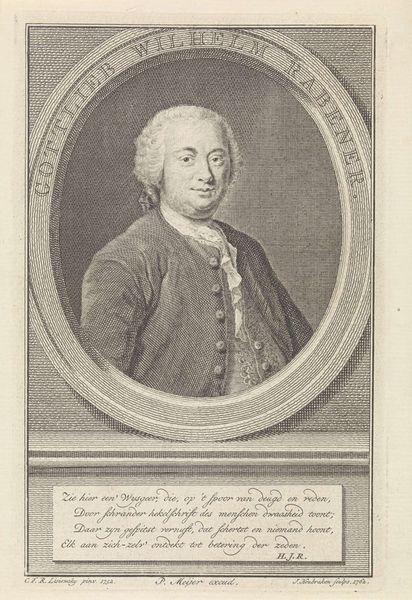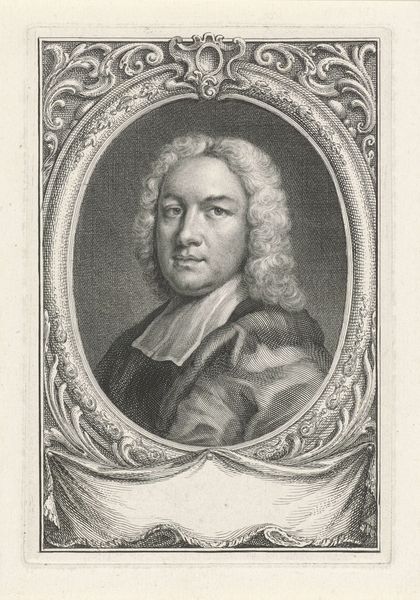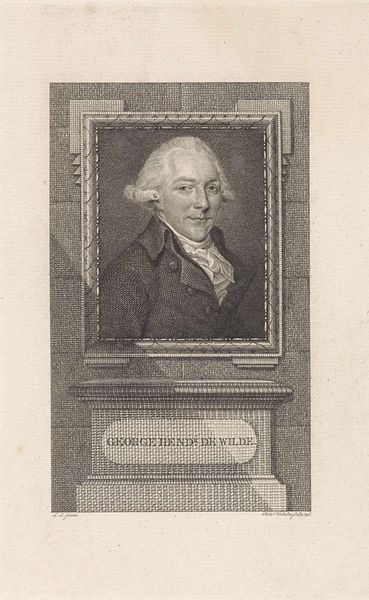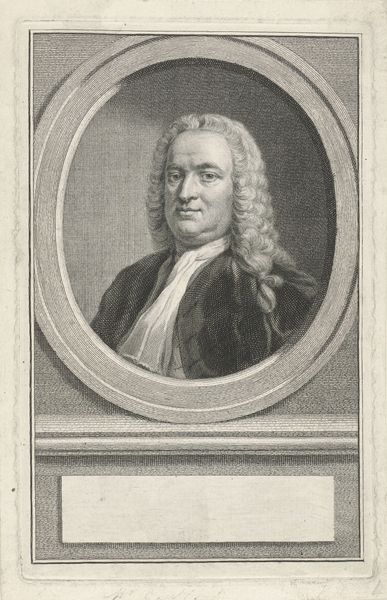
engraving
#
portrait
#
baroque
#
dutch-golden-age
#
charcoal drawing
#
portrait reference
#
history-painting
#
engraving
Dimensions: height 177 mm, width 117 mm
Copyright: Rijks Museum: Open Domain
Curator: Looking at Jacob Houbraken's "Portret van Jonas Witsen," an engraving dating roughly from 1749 to 1767, one can't help but notice its formal restraint and how it embodies Dutch Golden Age portraiture conventions. Editor: It’s an interesting piece. The sitter’s calm expression within that ornate oval frame seems very proper. What do you see in this piece beyond the immediate representation of wealth and status? Curator: I see a carefully constructed performance of masculinity rooted in the historical power structures of the Dutch Golden Age. Consider how Witsen, positioned as an elite member of Dutch society, utilizes the conventions of portraiture to solidify his socio-political standing. Think about how race, class, and gender intersect within the narrative the artist creates for us. The clean lines, the control of shadow—these elements aren’t simply aesthetic choices. How do you think the artist may have used visual cues to convey dominance or privilege? Editor: The subject is presented within an oval, separate from the background, suggesting the separation of powerful men from common people? Perhaps this echoes the values of the patriarchy back then? Curator: Precisely! Consider the context: the Dutch Republic, deeply embedded in colonial power, and a societal structure reinforcing the male gaze. Now, how might we interpret Witsen's calm, almost detached expression, in light of these power dynamics? Editor: It’s like the portrait acts as a mirror reflecting not just his appearance but also his place in a specific hierarchy... How it subtly legitimizes and naturalizes existing power relations in the Dutch society of the era. The man has all the privileges... Curator: Exactly. And by understanding these elements, we are better equipped to question them, challenge them, and advocate for art spaces that engage meaningfully with the power structures that continue to shape artistic expression today. Editor: I learned more than I expected from this. Viewing the artwork with a socio-historical lens offers so much perspective. Curator: Absolutely. Every portrait can provide such a lens on complex issues like race and power relations. We simply have to keep asking the right questions.
Comments
No comments
Be the first to comment and join the conversation on the ultimate creative platform.
